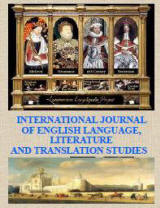Decoding the Institution of Marriage:
A Semiotic Interpretation of Vasanth Kannabiran’s Pankaja
Sathyaseelan D¹ and D. Laura
Dameris Chellajothi²
ABSTRACT
Marriage, as a social institution, is encoded with
multiple layers of meaning. The semiotic interpretation of marriage
as a code signifies, how various sign systems – such as caste,
religion, and gender – interact and intersect with each other in the
formulation of marital code. This research paper probes into the
dynamics of endogamy and exogamy in Vasanth Kannabiran’s novel
Pankaja examining how the marital choices of protagonists Jaganathan
and Kannamma reflect the tension between individual desire and
entrenched societal norms. Offering insights on how diverse sign
systems influence and shape the institution of marriage. Delving
into the underlying sign systems that contribute to the framework of
marriage, it investigates the influence of social systems and its
stratifications on the marital institution. The paper also
highlights the role of marriage as a deterministic social system in
the manifestation of human emotions such as shame, guilt, fear, and
honour.
Keywords: Marriage, endogamy, exogamy, sign systems, code.




